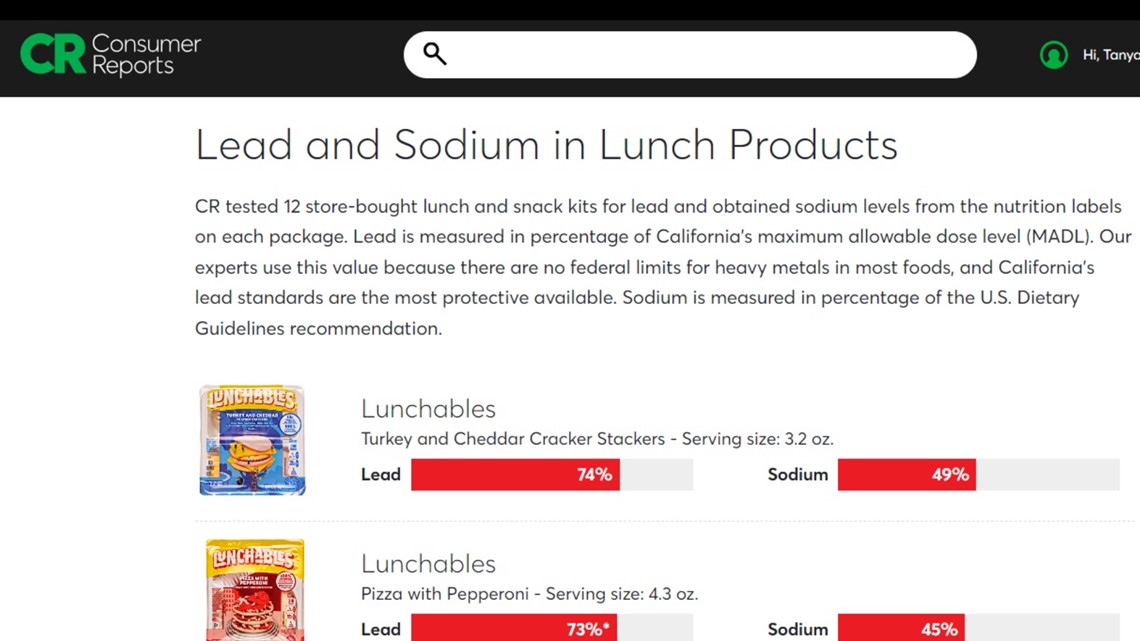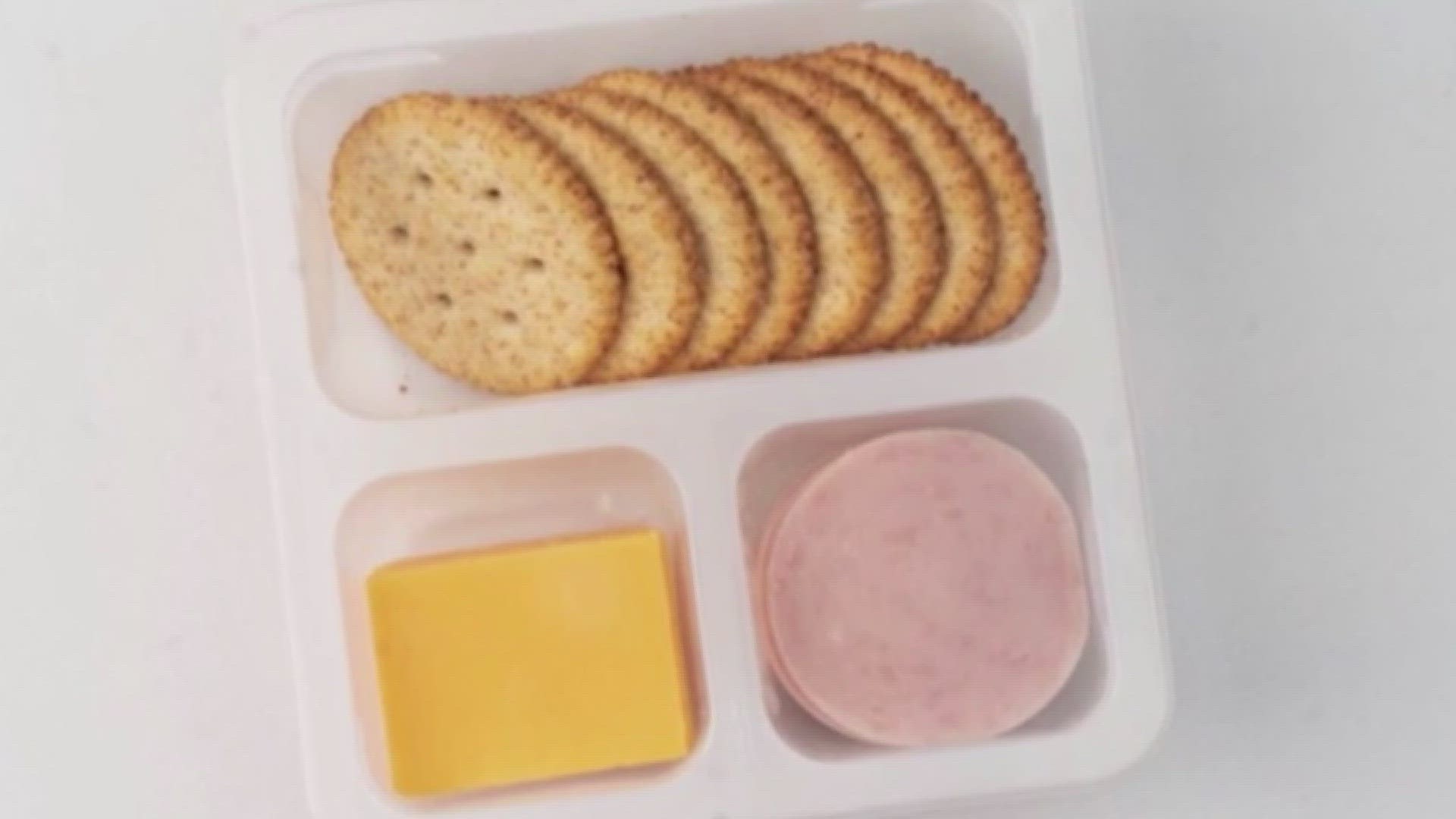GREENSBORO, N.C. — School day mornings are busy in many homes, so those prepackaged lunch kits called Lunchables, help quickly check the “what’s for lunch?” box. But according to Consumer Reports, that convenience may come at a cost.
"Lunchables and similar kinds of lunch kits are simply not healthy for kids. CR’s tests found these kits contain concerning sodium levels and harmful chemicals that can lead to serious health problems over time," said Ken Loria, Consumer Reports.
Consumer Reports tested 12 lunch and snack kits and found concerning levels of lead, cadmium, or both in all the kits as well as sodium. Let's tackle sodium first...
The sodium levels in these kits are also quite high, ranging from 460 to 740 mg, nearly a quarter to half of a child’s daily recommended limit. And when it comes to the versions found in some school lunch programs, those had even higher sodium levels.
"Kids with high sodium intakes are about 40% more likely to develop hypertension than those who have low sodium diets," said Loria.
Smithfield Foods said, “Sodium is a key ingredient in many of our products and helps us meet customer and consumer demands for quality, authenticity, flavor, and convenience.
Kraft Heinz and Maple Leaf Foods said they were working on ways to reduce sodium levels.
So, what can busy parents do to help kids make healthy food choices? CR recommends looking over the school lunch menu at the beginning of each week to find nutritious items your kids like to eat or consider packing a lunch with healthy whole grains, proteins, fruits, and vegetables at home.
CR also recommends encouraging your kids to drink water or plain milk at lunch, as sugars in juice or sweetened milk can add up fast.
Where does the lead come from?
According to the Consumer Reports article about the testing: Lead is measured in percentage of California’s maximum allowable dose level (MADL). Our experts use this value because there are no federal limits for heavy metals in most foods, and California’s lead standards are the most protective available.


To properly read the CR testing graphics, the lead found is 74% of the daily allowable standard set by California.
"Even in small amounts, these heavy metals can cause developmental problems in children," said Loria.
Kraft Heinz, the parent company of Lunchables, Oscar Mayer, and P3, told CR, “All our foods meet strict safety standards,” and said that “lead and cadmium occur naturally in the environment and may be present in low levels in food products.”
Smithfield Foods, which makes Armour LunchMakers, said it adheres to “strict programs and policies that promote food safety and quality in every step of our value chain.”
Target, which makes Good & Gather products, didn’t respond to CR’s request for comment.

